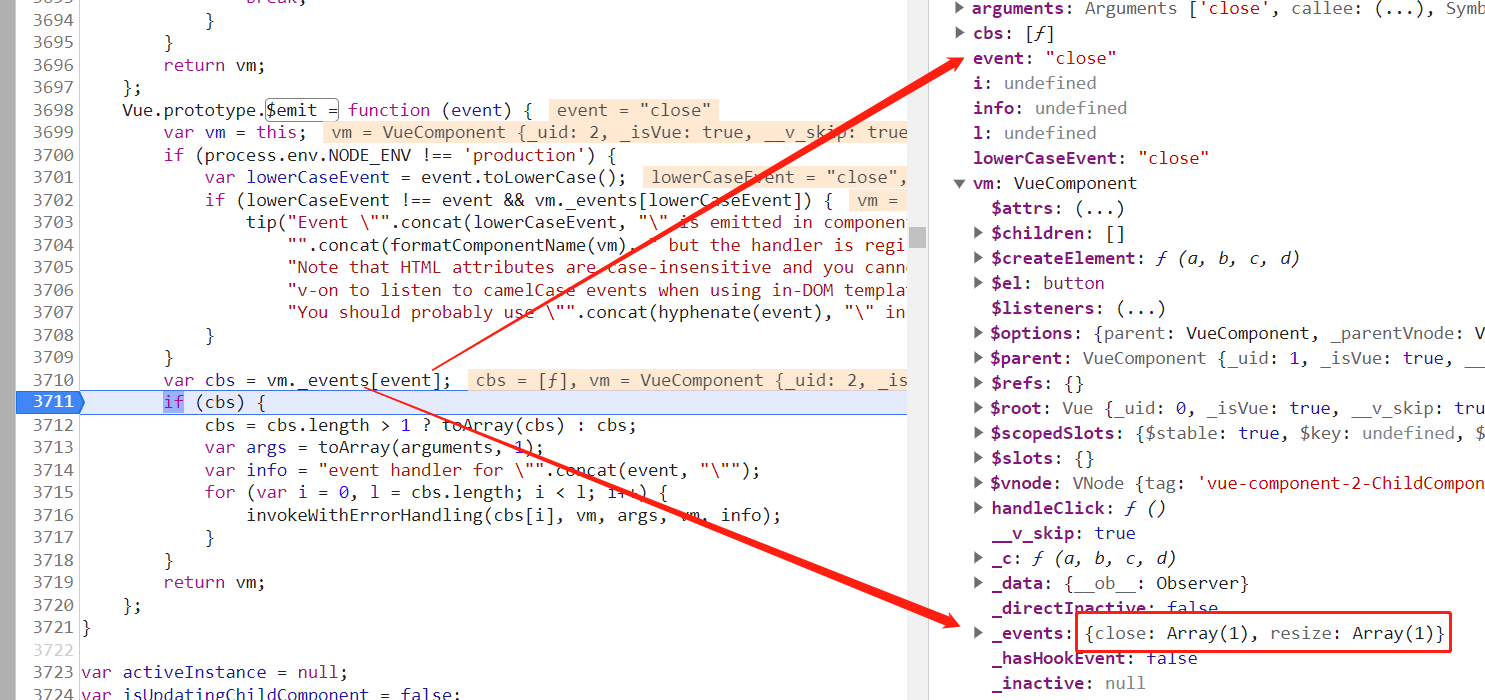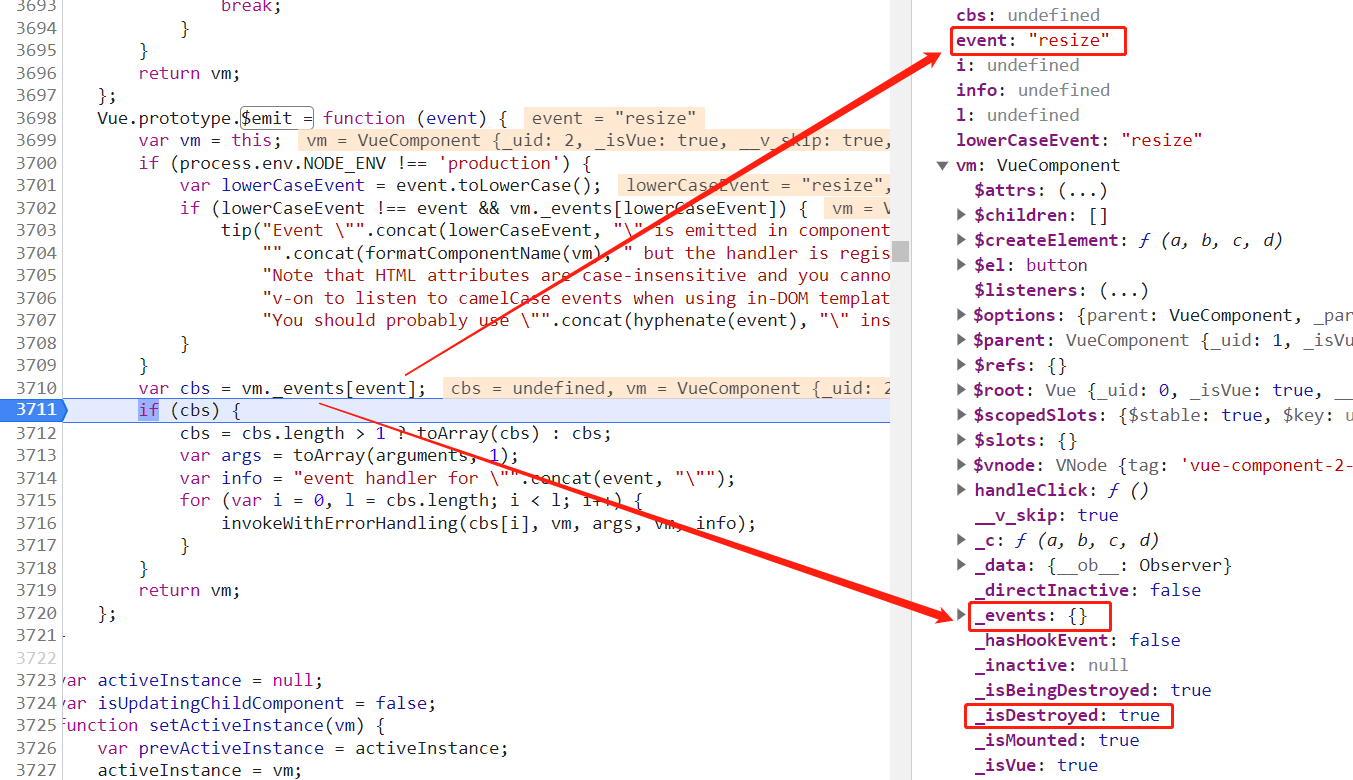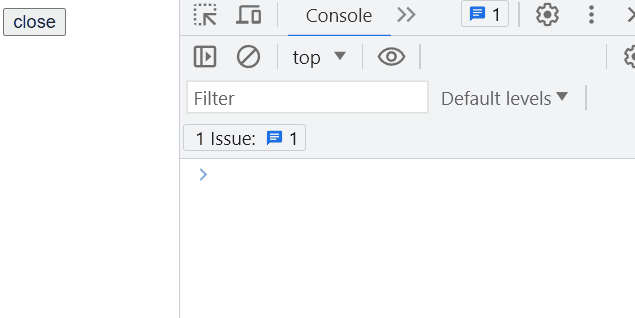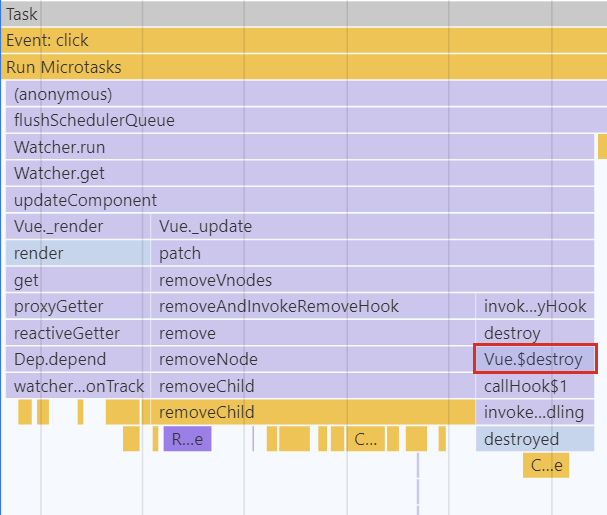从源码看 Vue 组件销毁后触发其事件
从一个 bug 说起
记录一个 Vue 组件事件的边界情况。项目中有一个组件,是一个面板,可以通过拖拽改变自身尺寸,也可以被关闭。
面板尺寸有变化后,需要通知父组件 resize 事件。例如,其他非响应式的 DOM 利用这个事件更新尺寸
而点击关闭按钮后,需要通知父组件 close 事件。同时,这也是一个 resize 事件。
面板:
1 | <!-- ChildComponent.vue --> |
由于 resize 事件和 DOM 变化相关,因此潜意识里使用了 $nextTick。这为 bug 埋下了伏笔。
父组件收到 close 事件后,会销毁这个组件:
1 | <!-- App.vue --> |
现象是,close 事件触发后,resize 事件没有触发。父组件没有执行 handleResize
原因就在于子组件内,先触发了 close 事件,导致自身销毁,然后在 nextTick 才触发 resize。从逻辑上,已经销毁的组件无法再触发事件了,所以父组件没有收到这个事件。
看看源码
bug 的直接原因找到了。这次从 Vue 源码的角度,看看为什么会有这个问题。
由于现在(2023 年)Vue2 快要不维护了,仓库改动会小一些,因此用 2 版本,直接贴源码看看:
1 | // https://github.com/vuejs/vue/blob/main/src/core/instance/events.ts |
能看到,调用 $emit 实际上是在组件的实例 vm 上,从 _events 属性里找回调函数,然后调用的。
在 webpack 项目中,打开 sourcemap,就能在浏览器里给 js 版本的 Vue 源码断点了。
利用断点看看 close 和 resize 时有什么不同
close 事件:
点击立即触发 close 事件时,实例中有 close 和 resize 两个回调。
resize 事件:
经过一个 tick,实例已经销毁(_isDestroyed: true),_events 回调也清空了,因此不会调用到父组件的函数。
一句话来说,就是 nextTick 的时机,如果在组件销毁之后,组件实例的事件回调已经清空了,因此 $emit 不会生效。
验证结论
我们加一些 log,用 setTimeout 验证这个结论:
1 | // ChildComponent.vue |

可见,触发父组件的 handleClose 后,子组件会率先销毁,而 nextTick 和前边的回调都在一个事件循环内,执行完了,才执行 setTimeout 的宏任务。
Vue 什么时候清理 event 回调?
通过 performance 录制,我发现点击按钮时,会调用 $destroy,这个时机应该是父组件更新 virtual DOM 后发现子组件可以销毁时。

1 | // https://github.com/vuejs/vue/blob/main/src/core/instance/lifecycle.ts |
重点是 vm.$off();,它是组件实例的方法,用于手动移除自定义事件监听器。
总结一下
首先,调用 $emit 可能不会正确触发父组件的回调,例如通过 nextTick 延迟调用,而此时组件已经销毁时。
其次,验证了 destroy 生命周期回调会早于 nextTick,他们都在一个宏任务中,早于 setTimout 的下个任务。所以 setTimeout 里的 $emit 也是无效的。
最后,通过给 webpack 设置 sourcemap 的方式,在浏览器中给 Vue 源码设置断点,并且利用浏览器的 Performance 工具,发现 $destroy 中会调用 $off 来清除事件监听,所以在这之后的 $emit 已经没有回调了。
不过这里没有任何 debug 消息,也许这里可以优化为,$emit 触发不存在的事件时,抛出一个 warning 告知开发者。
测试代码
App.vue
1 | <template> |
ChildComponent.vue
1 | <template> |